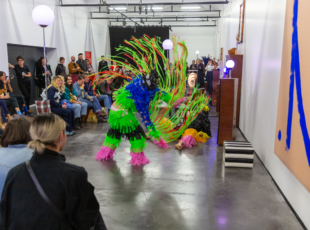Vivien Roubaud, resist, assemble, encapsulate
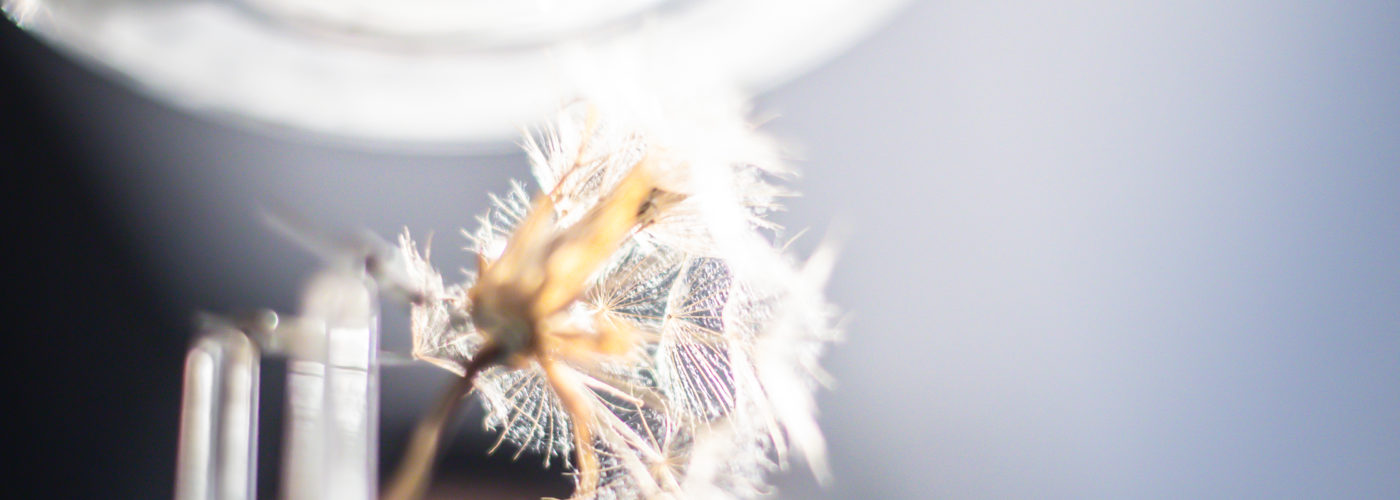
Article author :
Playing around with domestic materials and objects, Vivien Roubaud loves to extract unexplored properties from them. His assemblages make us (re)live simple yet fragile moments and confine enhanced microphenomena to an anti-capitalist critique. A meeting with this materials resistant currently exhibited at Capture #2, at the Namur Pavillon.
When we ask him how he would define himself, Vivien Roubaud divulges that the generalist bricoleur label has stuck to him for far too long. ‘I acknowledge that I have described myself in that way, but I take back what I said. I find it too reductive. Nor am I a sculptor; I have neither a hammer, nor a chisel, I don’t shatter material. Actually, I have the impression of making a lot of assemblages, and intuitively I would instead describe myself as a resistant to the objects and this service society which are ceaselessly being foisted on us’. A double-degree graduate of the Marseille Beaux-Arts and the Villa Arson National Advanced Arts School in Nice, Vivien, having adopted Brussels as his city, attempts to short-circuit the system he navigates through by means of his works. Somewhat similar to this cinematographic touchstone from the 1980s with which he greatly identifies: Brazil, by Terry Gilliam. A dystopian science fiction film which explores a totalitarian society, a kind of political satire mixed with dark humour already presenting a nightmarish vision of the climate crisis.
To have them speak in another way, Vivien examines the objects with which he works in great detail. When he launches a new creation process, he thus enters a game of back-and-forth with the object. His curiosity allows him to increasingly gain a better understanding of the systemics of his subject, which he names the object’s secondary effects. ‘I try to capture a potential and bring it out simply by means of a manual intervention which directly offers a new viewpoint on the object’. Chandeliers, kitchen sinks, lawnmowers, etc. And beyond their purely technical aspect, Vivien Roubaud’s acts of prospection always bring back the mechanics found among living things. As with his ‘Salsifis douteux’, currently on view at the Capture #2 exhibition.
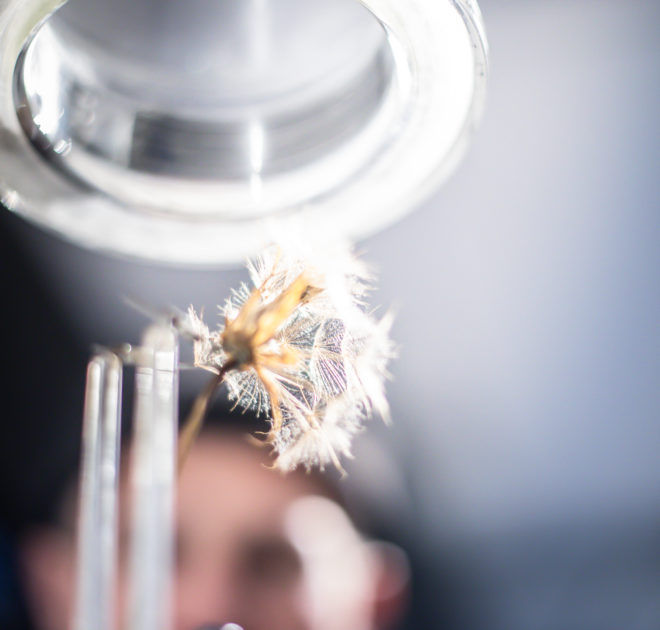
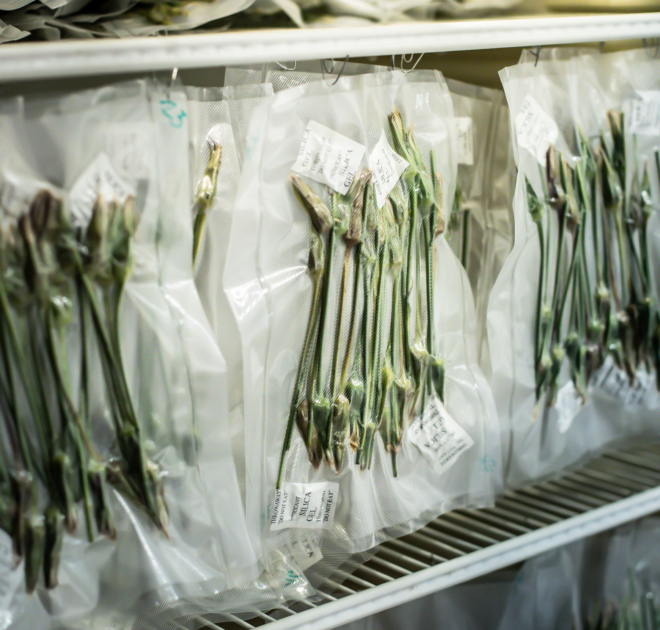


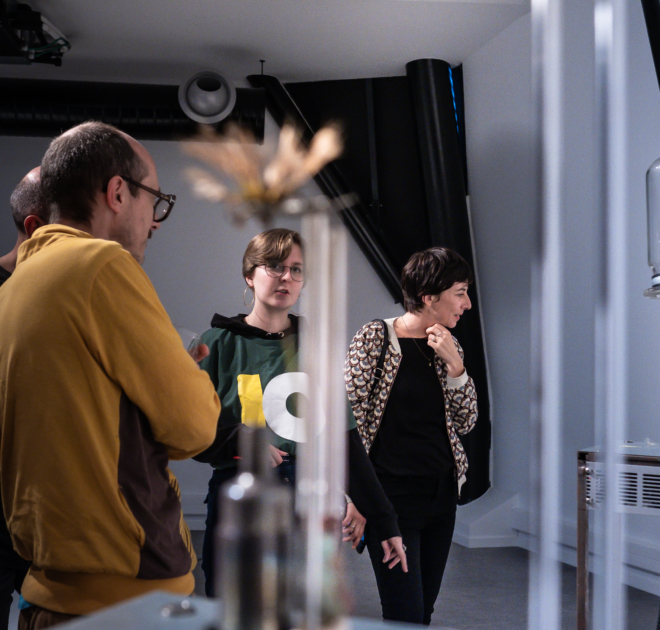
Tragopogon dubius by its pleasing Latin name, an herbaceous plant which resembles a dandelion. This participatory work, a format quite rare for the artist, invites visitors to take a still-closed yellow salsify bud and place it on a kind of single-flower vase which crowns one of the installation’s three electronic bases. ‘When you press a switch at the top of the base, a transparent vase descends onto the salsify bud,’ explains Vivien. ‘Thanks to a dehydration system, the bud opens fluidly to form a ball of silk, the whole process occurring with surprising geometry and rapidity’. The sequence of the plant opening up lasts no longer than two minutes whilst in nature the process may take between two and three days. When presented with this scene, people’s expressions are in the main ones of astonishment. Not of shock, but instead their eyes shine like those of the child who lives in all of us. Because we all have vivid memories of picking dandelions in the fields, then blowing on their fine silky petals. But, on the human scale, we have never been able to see such a blooming speeded up.
It’s extremely aggressive to see this length of plant dead in its fridge and to force it to open at lightning speed. It’s almost like a swansong.
Having plucked them not far from Brussels, Vivien stores the yellow salsifies in small vacuum-packed sachets which he keeps in a cool place. He can thereby preserve them for up to five months in a refrigerator which he preferred glazed, like in snack bars, and which is on-site in the exhibition space. ‘Even if the viewer can freely choose whether or not to take part, this act of accelerating a natural process contains a vast duality. I feel that it simultaneously has a rare beauty, you are in front of a sensitive, living object, but at the same time, it’s extremely aggressive to see this length of plant dead in its fridge and to force it to open at lightning speed. It’s almost like a swansong’. The artist wished in this way to convoke other procedures the living world is subjected to, such as the gas baths given to apples in order to preserve them for months without them going off, or the genetic modifications made to certain varieties of sugar beet in order to maximise the number of year-round harvests. ‘At this stage, they are no longer plants but machines’.
Encapsulated microphenomena
With ‘Samare stationnaire’, another of the assembler artist’s installations exhibited at Capture #2, Vivien Roubaud once again offers to circumscribe a brief space-time. In botany, a samara is a dried fruit (an achene, more specifically, which thus contains only a single seed) with a wing-shaped membrane. Several trees produce samaras: maple, ash, elm or tulip tree. On bases which produce a laminar vertical airflow, Vivien makes a samara levitate. ‘This flow functions like a wall of air which holds the samara in rotary suspension above its base, without it ever being able to come to rest or to fall,’ he smiles.
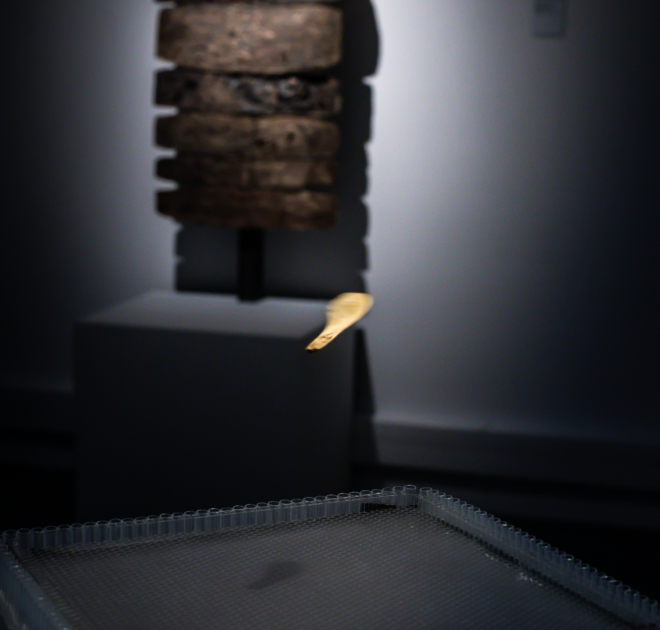
As with the dandelions, we have all seen this moment where the samara’s plant wing spins innocently in the air. What Vivien Roubaud is always interested in is reconditioning, encapsulating these physical-chemical phenomena, often very fleeting or not important enough for our eyes to rest upon them, in order to render them visible. One of his earlier exhibitions at Creux de l’Enfer, a contemporary arts centre in the Auvergne-Rhône-Alpes region, was for that matter entitled Les univers encapsulés. ‘The painter Paul Klee said that art does not reproduce the visible but makes visible. That is what drives me as well. Offering something which does not have substance for an instant and finally giving it space’.
Assemblage is a practice which above all generates prototypes. Unlike design, you don’t produce a serial object. You cannot put my installations in a box and reproduce them as a mountable kit.
When we question him, we also discover that there is a certain fear of finitude which spurs him on in his works. It is often, come to that, impossible for him to truly set a work in stone and consider it as having been completed. ‘From exhibition to exhibition, I find flaws in my installations which allow me to reinterpret them, or even to take them in another direction. Assemblage is a practice which above all generates prototypes. Unlike design, for example, you don’t produce a serial object. You cannot put my installations in a box and reproduce them as a mountable kit’.
After having worked for long months on these two installations, Vivien Roubaud is continuing to experiment with assemblage. ‘At the moment, I am trying to fix fireworks in petroleum. That creates very interesting force vectors invisible to the naked eye. I am also carrying out research into oil baths to see which objects I can immerse in them, either to suffocate them sonorously, or to lubricate them endlessly and protect them from oxidisation. Like every artist, I also obviously want to create my own cloud. Mine will be greasy, rainy, very liquid and will hold steady in space’.
A story, projects or an idea to share?
Suggest your content on kingkong.

